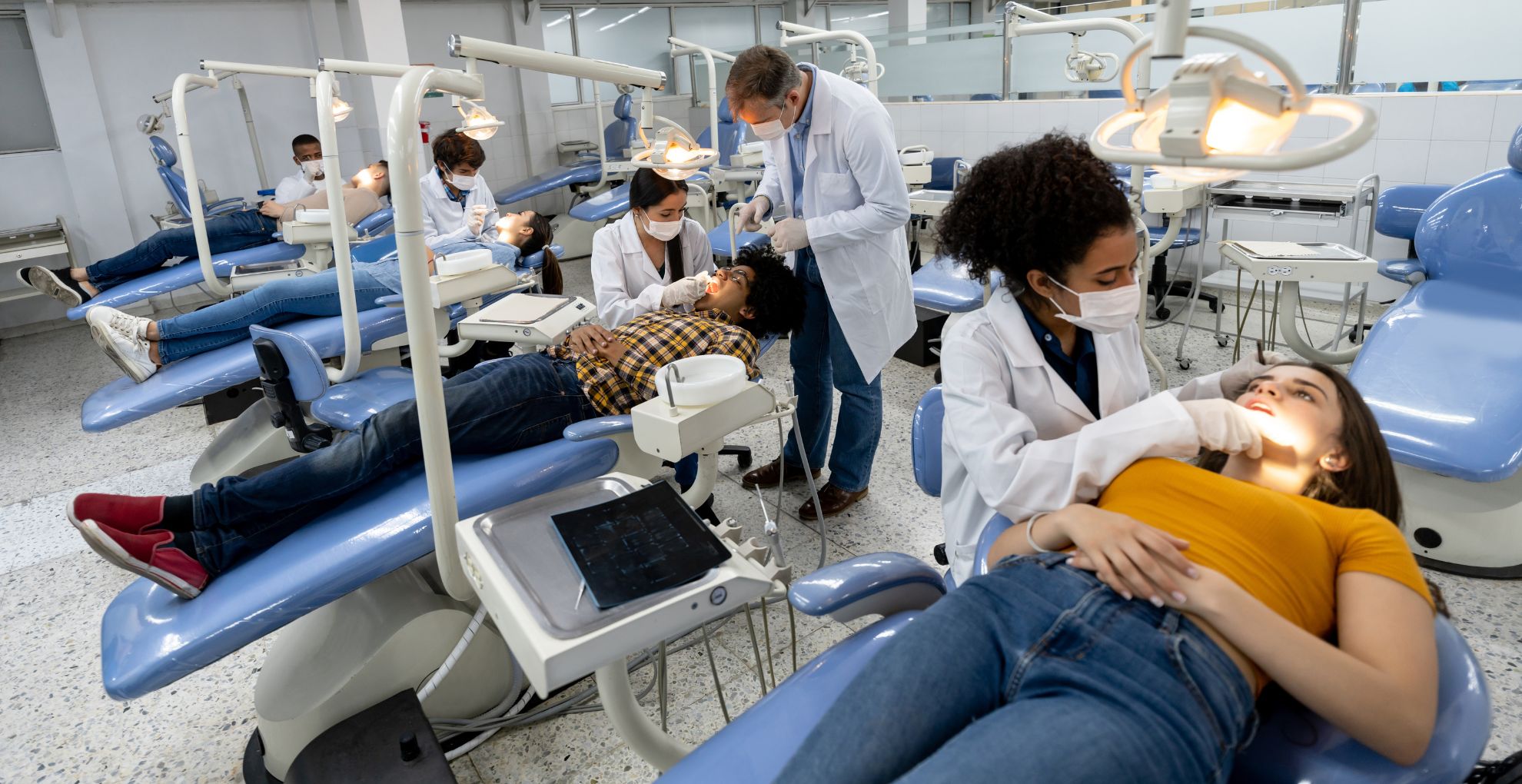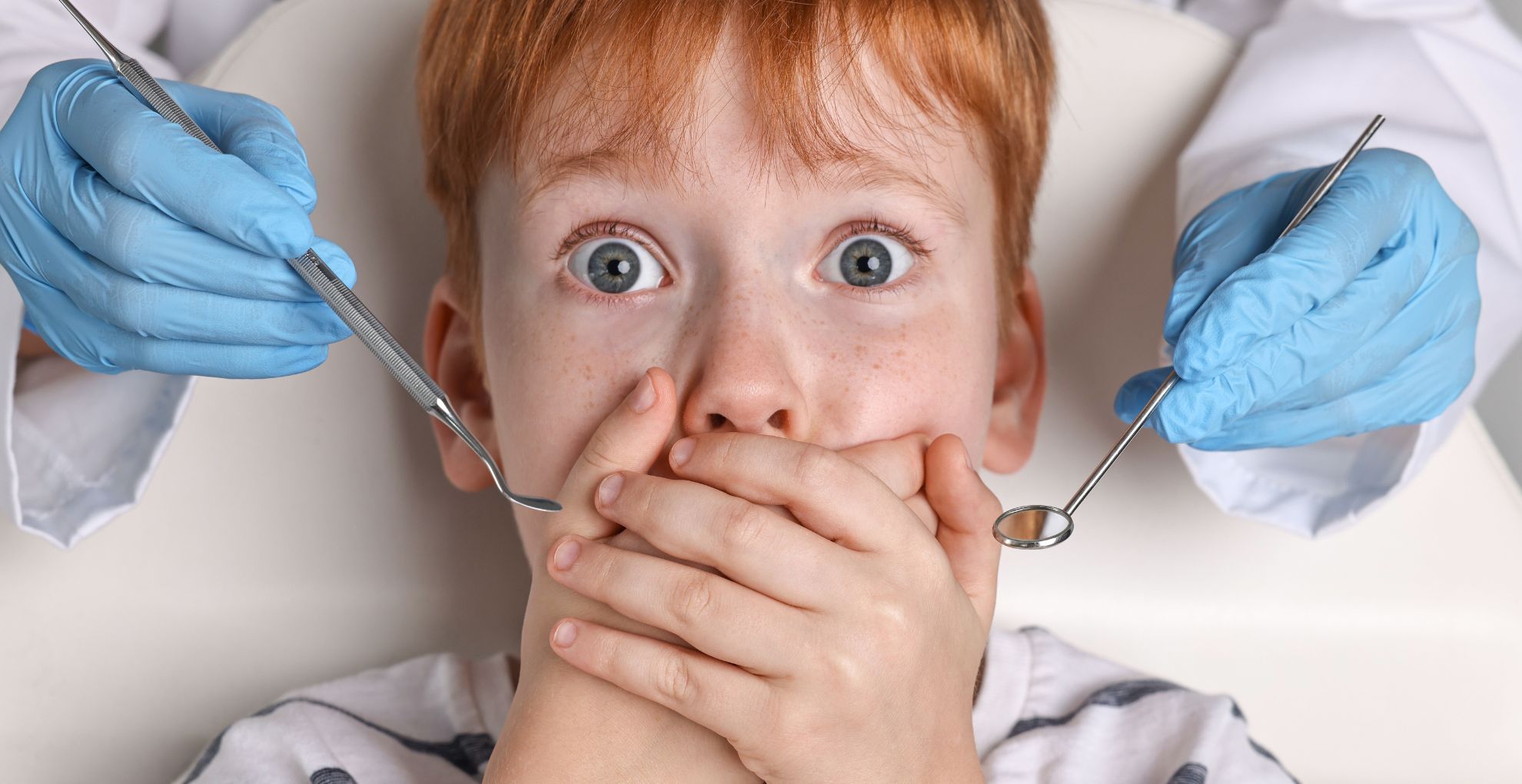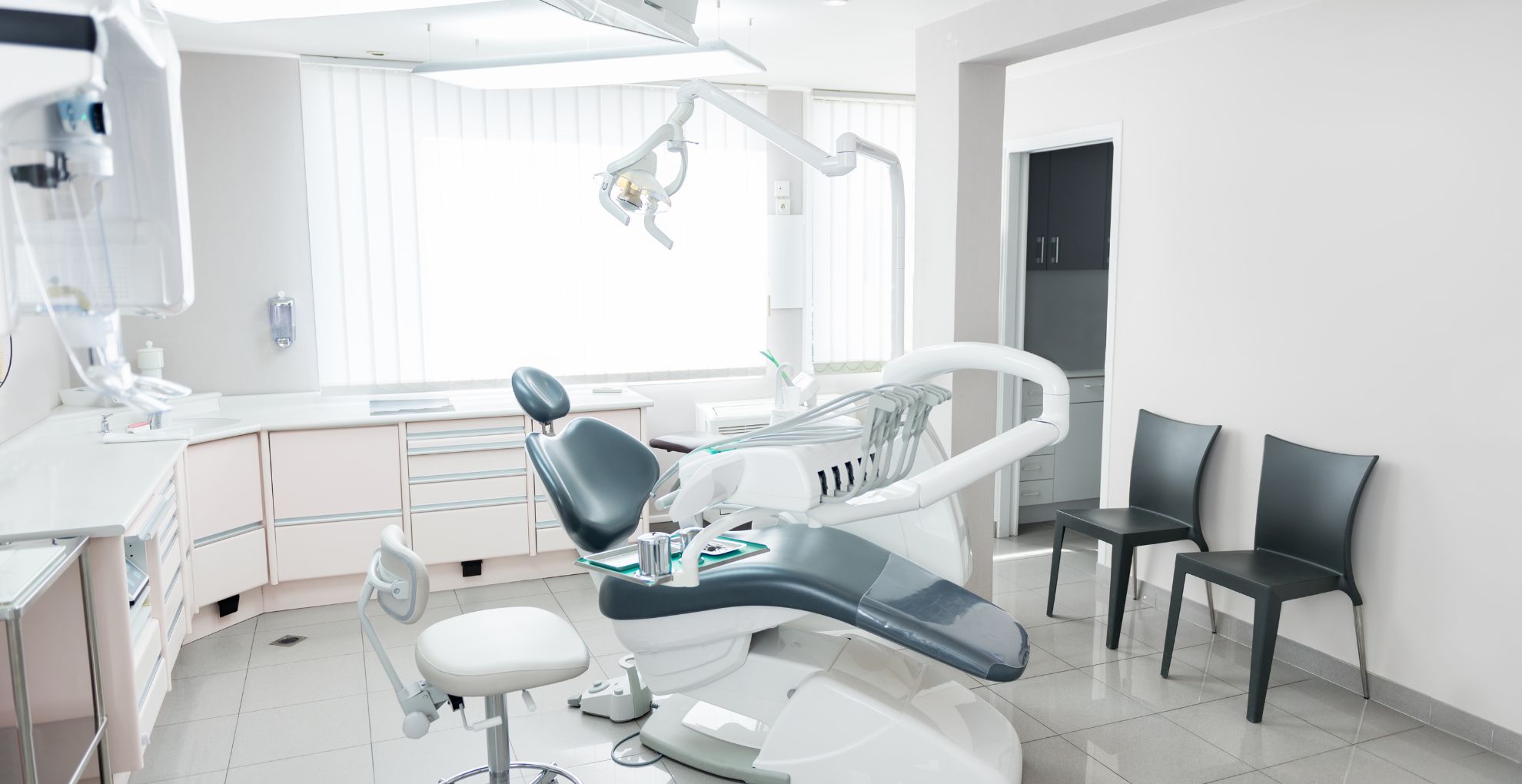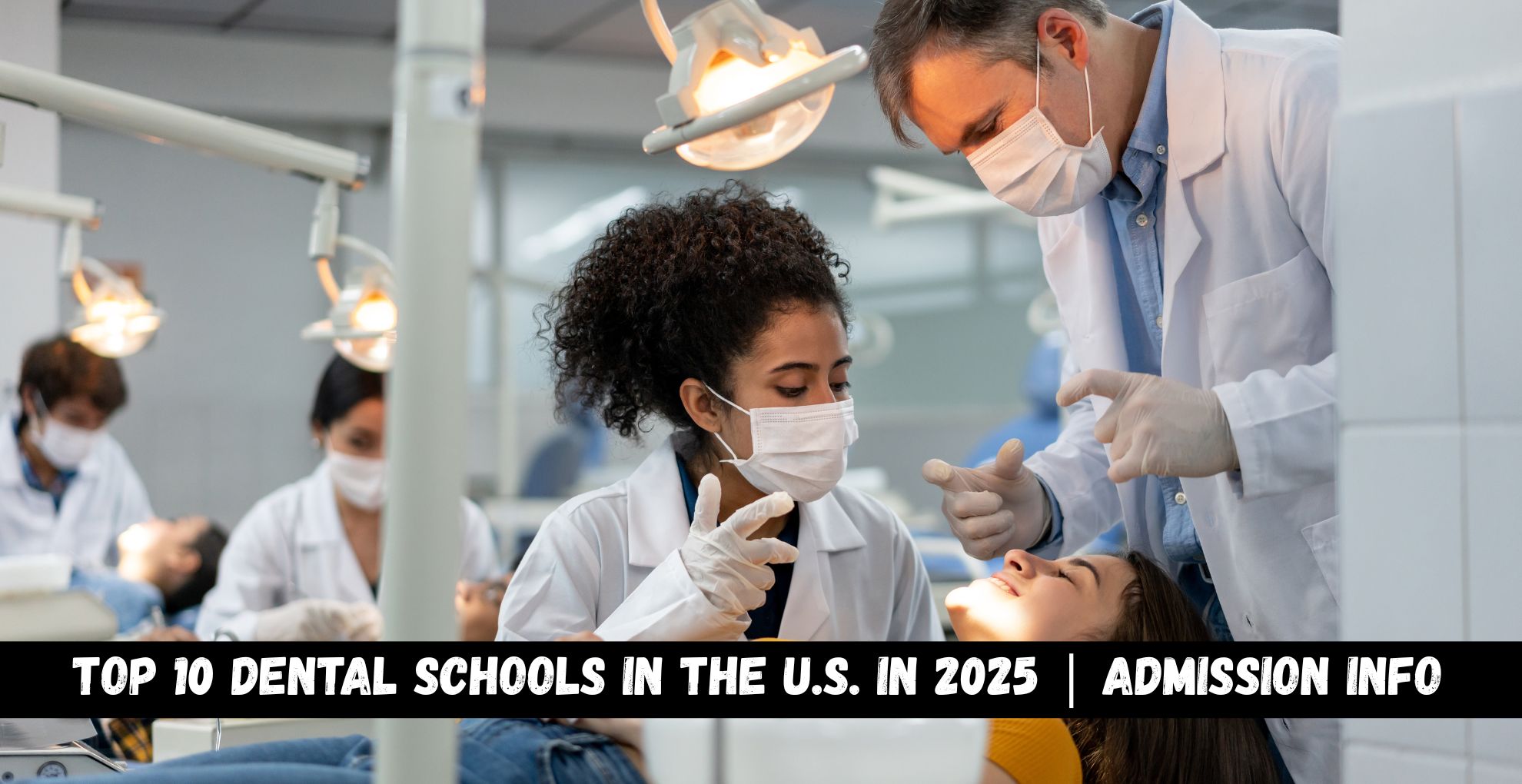Choosing the right dental school isn’t just about prestige—it’s about finding the program that will shape your future as a dental professional. In 2025, aspiring dentists have a wide array of exceptional options across the U.S., each offering unique strengths, specialized programs, and transformative experiences. Whether you’re driven by research opportunities, a commitment to underserved communities, or dual-degree flexibility, this guide will help you navigate the best dental schools in the U.S. and make an informed choice that aligns with your goals.
Let’s explore what makes these top 10 dental schools stand out in 2025—and what you can do to get there.
Why Choosing the Right Dental School Matters
Dental school is a major investment—not just financially, but emotionally, academically, and professionally. The right school sets the tone for your entire career.
The Impact of Dental School on Your Career
Your dental education will influence your access to residencies, mentorship, and clinical experience. Top-tier schools often have better-funded research labs, connections with prestigious hospitals, and alumni networks that open doors for private practice, academia, and specialized dentistry.
Beyond academics, schools shape how you see and serve communities. A program rooted in community outreach, for example, may inspire you to work in public health or nonprofit sectors.
What Sets the Best Dental Schools Apart
In today’s competitive landscape, it’s no longer just about GPA and test scores. Leading schools emphasize hands-on training, early patient interaction, interdisciplinary study, and social responsibility. Programs that offer small class sizes, robust mentorship, and dual degrees can give you a serious edge in both skills and employability.

Top 10 Dental Schools in the U.S. in 2025
Each of these dental schools has carved a name for itself based on curriculum innovation, student support, and real-world impact.
1. Western University of Health Sciences College of Dental Medicine (California)
WesternU has built its reputation on inclusive, community-driven dental education. With a 2.1% acceptance rate, this school is highly selective but deeply rewarding. Students here commit to two years of volunteer work in community clinics, gaining real-world insight and compassion for vulnerable populations.
Its Doctor of Dental Medicine program is innovative and patient-centered, with early clinical exposure. WesternU is also known for integrating interprofessional education, meaning you’ll work alongside students in medicine, pharmacy, and nursing, mirroring real clinical environments.
2. Meharry Medical College School of Dentistry (Tennessee)
As one of the nation’s oldest historically Black institutions, Meharry’s School of Dentistry is rooted in service, equity, and leadership. The acceptance rate is 2.4%, with an average GPA of 3.5 and a DAT score of around 17.9.
This school uniquely supports students from diverse backgrounds and prioritizes underserved populations. The International Track Program welcomes global applicants and prepares them to meet U.S. licensure standards with tailored support.
3. Case Western Reserve University School of Dental Medicine (Ohio)
Case Western combines academic excellence with public health values. With a 2.9% acceptance rate and a median GPA of 3.6, it’s competitive yet holistic in its admissions.
Students can pursue dual degrees such as DMD/MPH or DMD/Clinical Research, with a strong focus on preventive care, particularly in areas like HIV and cancer. Its dental public health research is among the best in the country.
4. LECOM School of Dental Medicine (Florida)
Lake Erie College of Osteopathic Medicine (LECOM) offers a unique dental program that stands out for its affordability and problem-solving-based curriculum. The school has a 3.1% acceptance rate, and applicants typically present a 3.2 GPA and DAT scores around 18.
LECOM’s focus on community-based training ensures students graduate with both technical skills and the human touch. Clinical rotations often take place in under-resourced areas, preparing graduates to handle complex, real-world challenges.
5. University of Connecticut School of Dental Medicine (Connecticut)
UConn offers small class sizes (often with a 3:1 student-faculty ratio), which means more personalized guidance and closer mentorship. The average accepted GPA is 3.6, with DAT scores hovering around 21.
Students can pursue a DMD/MPH or advance into specialties like endodontics, prosthodontics, or oral surgery. Its research programs and funding make it a popular choice for those seeking academic careers or clinical innovation.
6. Missouri School of Dentistry and Oral Health at A.T. Still University (Missouri)
Missouri School of Dentistry is driven by a mission to expand care access in rural and underserved regions. The program requires community-based clinical rotations and prioritizes applicants with a heart for service. With an acceptance rate of 3.3%, it’s ideal for those committed to public health dentistry.
Its Doctor of Dental Medicine degree is grounded in whole-person care, and students often graduate with a profound sense of social responsibility.
7. Arizona School of Dentistry and Oral Health (Arizona)
Part of A.T. Still University, this Arizona-based program also ranks high for community service and public health. Applicants typically present a GPA of 3.41 and a DAT of 19.3. The school offers dual degree options such as DMD/MPH, appealing to students interested in advocacy and systemic health change.
Its interdisciplinary model connects dental students with those in osteopathy, making for well-rounded, culturally competent providers.
8. Howard University College of Dentistry (Washington, D.C.)
Howard is a leader in promoting diversity, inclusion, and leadership in dentistry. With an acceptance rate of 3.4% and a minimum GPA requirement of 2.75, it values potential, grit, and commitment just as much as academics.
Howard’s programs span DDS/MBA to specialties in pediatric and general surgery. The school’s alumni are some of the most influential voices in public oral health today, and its focus on community engagement gives graduates a grounded, real-world edge.
9. Harvard University School of Dental Medicine (Massachusetts)
Prestige meets purpose at Harvard, where only 3.5% of applicants are accepted. Students here boast GPAs around 3.85 and DAT scores near 23, among the highest in the country.
But it’s not just about stats. Harvard’s dental program integrates biomedical sciences with clinical training and offers research pathways into oral immunology and cancer studies. Strong letters of recommendation and significant research experience are crucial for admission.
10. University of Kentucky College of Dentistry (Kentucky)
Kentucky’s dental school has quietly built a strong reputation for innovation and service. The acceptance rate is 3.6%, and applicants usually present a GPA of 3.6 with DAT scores around 20.
Known for patient-centered care, the school emphasizes treatment for rural and Appalachian populations. Specialties include orofacial pain, periodontology, and orthodontics. Graduates often leave with a deep understanding of community needs and solutions.

How to Improve Your Chances of Getting In
Admission to top dental schools is no small feat, but it’s not impossible either. By approaching the process strategically, you can maximize your chances.
Focus on Academics and DAT
Aim for a GPA above 3.5 and a DAT score between 19–23. These metrics are your academic foundation. If one is weaker, strengthen the other. Use study guides, take practice exams, and consider a test prep course if needed.
Build a Strong Resume
Dental schools want to see that you understand the profession beyond the classroom. Spend time shadowing dentists—at least 100 hours is a solid goal. Volunteering, especially in health-related settings, also shows your commitment to care.
Joining a pre-dental club can provide community, mentorship, and leadership experience. Don’t overlook research opportunities, especially if you’re applying to research-intensive programs like Harvard or Case Western.
Gain Real Clinical Experience
If you’re looking to stand out, consider international internships through organizations like International Medical Aid (IMA). Their pre-dental internships offer shadowing and hands-on clinical experience in underserved communities—something that resonates with schools prioritizing public service.
These programs also provide cultural exposure and maturity, two soft skills admissions committees value highly.

FAQs About U.S. Dental Schools
What is the average acceptance rate for dental schools?
Most top programs have acceptance rates between 2% and 4%, making them highly competitive. However, holistic admissions mean strong essays, experiences, and interviews can tip the scales in your favor.
Is the DAT more important than GPA?
Both matter, but they serve different purposes. GPA shows long-term academic discipline, while DAT reflects standardized aptitude. Aim for balance, but a high DAT can offset a lower GPA and vice versa.
Can international students apply?
Yes, many schools offer international tracks. Schools like WesternU and Meharry specifically accommodate international applicants and help them meet U.S. licensure requirements.
How much does dental school cost?
Tuition and fees range from $50,000 to over $100,000 annually. Be sure to explore financial aid, scholarships, and loan repayment programs, especially if you plan to work in public health or underserved areas.
How can I gain relevant experience?
Volunteer in local clinics, join pre-dental associations, shadow practicing dentists, and explore internships like those offered by IMA to build an impressive application portfolio.
Final Thoughts: Set Yourself Apart
The path to dental school is tough, but also incredibly rewarding. Choosing the right program requires honest reflection about your values, strengths, and long-term goals. Whether you’re aiming for research, private practice, or nonprofit outreach, there’s a dental school that matches your vision.
Use your application to tell a compelling story—not just about your grades and test scores, but about who you are, what drives you, and how you plan to change lives through dentistry. Seek out meaningful experiences, ask for strong recommendations, and apply early. With preparation and passion, you can join the ranks of future dental leaders in the U.S. and beyond.




